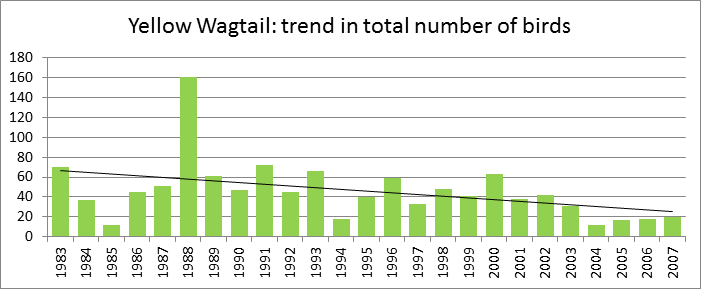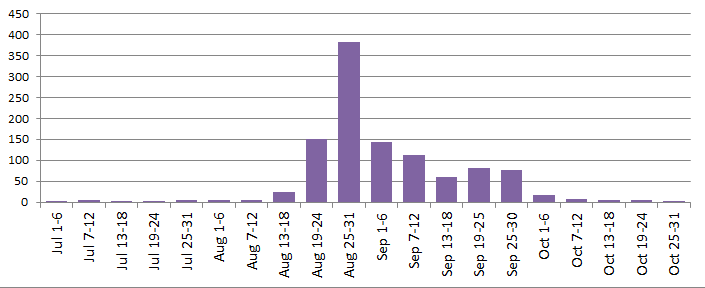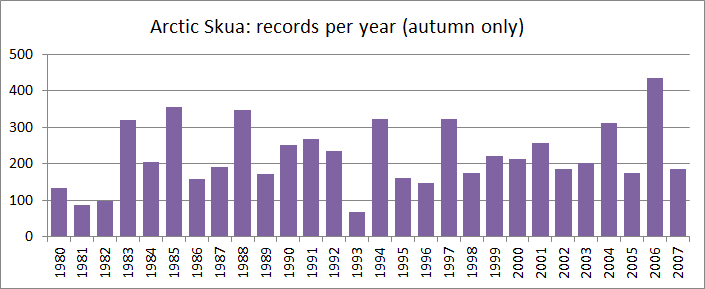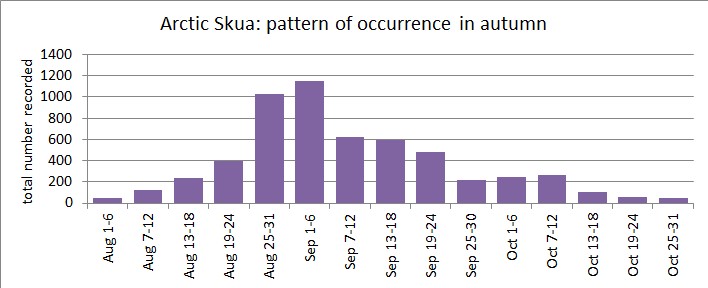Long-tailed Skua - 2006
 Sunday, February 13, 2011 at 12:11PM
Sunday, February 13, 2011 at 12:11PM Stercorarius longicaudus
Scarce passage migrant.
The Long – tailed Skua breeds in the Arctic and sub Arctic, wintering at sea mostly south of the equator.
This species was added to the Pembrokeshire list when Mathew (1894) recorded an immature shot at Tenby in the autumn of 1889 or 1890. Some 90 years elapsed before the second one was noted, an adult flying past Strumble Head on the 9th September 1980. Since then it has been recorded each autumn at Strumble Head in variable numbers. Just one was seen in 1993 and at the other extreme a total of 74 in 1991, 18 of them on the 15th September, with a mean of 13 per annum between 1980 and 2006.
Total birds – 1980 – 2006, August to October in six day periods.

Later occurrences were of single birds on the 1st November 1990, 4th November 2005, 14th November 1982, 2nd December 1996 and 3rd December 1999.
Most of the birds seen were juveniles, just 12 % were adults. All adults showed the dark lower belly of S. l. longicaudus, the form found in the species’ old world distribution, apart from one seen on the 3rd October 1999 which exhibited the all pale underparts characteristic of S.l. pallescens and therefore possibly from Greenland but the validity of there being two sub species is currently uncertain.
Away from Strumble Head, singles were recorded from the Pembroke to Rosslare ferry on the 24th August 1996, The Smalls on the 24th September 1983 and on the 3rd and 9th September 1984, Skokholm on the 4th October 1995, Skomer on the 11th September 1989 and 14th September 1991, Ramsey on the 28th September 1992 and 25th October 2000, North of Ramsey Sound in September 1993 and at St David’s Head on the 20th August 1997 with two there on the 30th October 1999.
There are just two spring records to date, singles passing through Jack Sound on the 2nd May 1995 and 30th April 1996.
Graham Rees
(Covers records up to and including 2006).
 GHR,
GHR,  Migrant,
Migrant,  passage,
passage,  seabird in
seabird in  Long-tailed Skua
Long-tailed Skua 






